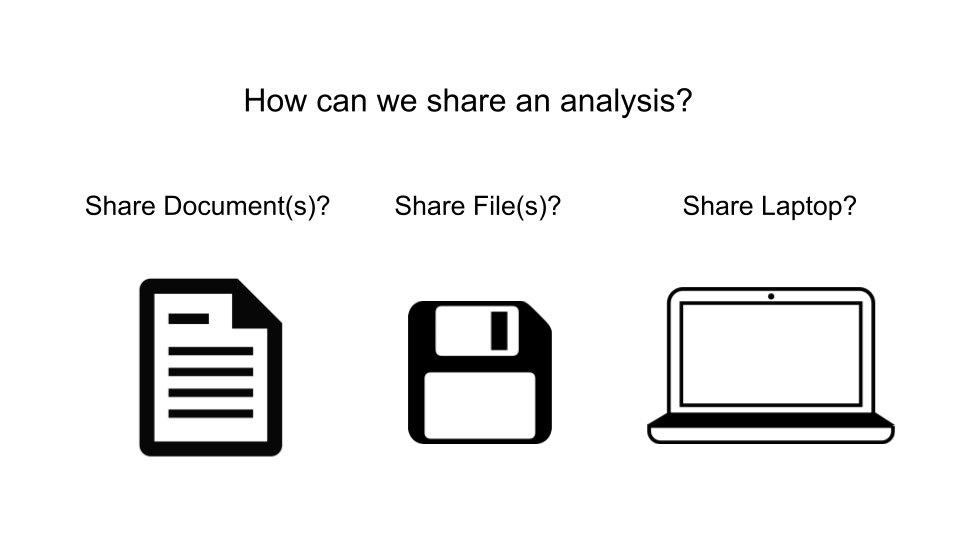Containers - Docker and Singularity
UM Bioinformatics Core
In this module, we will:
- learn about container systems Docker and Singularity
- discuss the what and why of containerization
- compare container solutions to other software management tools that we’ve discussed
- learn how to utilize publically available Docker or Singularity containers
- see a demonstration of building a new singularity container
Commonalities Between Software Management Tools
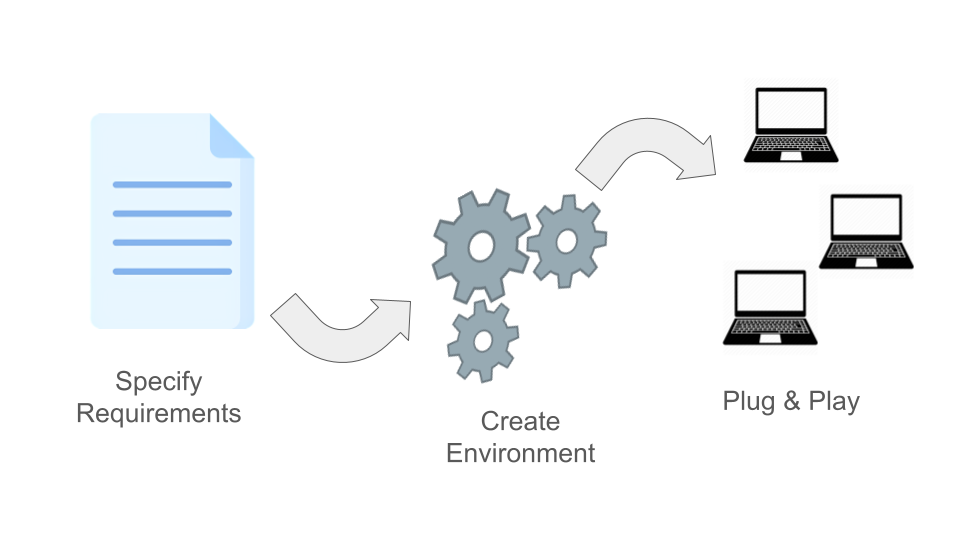
Overview of Containerized Software
The software management tools we’ve discussed so far are extremely helpful and important for reproducible research. However, they do have some limitations that we’ve mentioned, which we’ll bring into focus and elaborate in this module as we consider some additional options - containerized software. We’ll discuss in a moment what we mean by this term, but to start I’ll mention some of the additional things that containerized software can grant us:
- Additional portability
- Additional isolation of compute environments
- Additional long-term reliability
The simplest way to think of containers is as if there is a virtual computer system, running inside of your computer. You can imagine that the hardware layout of your typical computer can also be recreated through software, and that is kind of what is happening when we use software containers. This is of course a gross simplification, but for now we can think of it in this way.

You may have already heard the term “virtual machine” in the past, and this is a technology that is related to, but distinct from containers. We will be discussing containerization software specifically, and focusing on these because containers are more efficient, streamlined, and perfectly suited for reproducibility, when compared to virtual machines. When comparing between these, some things I’d like to highlight that work highly in favor of containerized software are:
- The usage of standardized specification files
- e.g. Dockerfiles, Singularity definition files
- allow for superior transparency and reproducibility.
- The layered nature of container architecture
- During creation, the result of each task is formed into its own layer
- The separate layers are “stacked” one over another until the entire environment is built
- Allows for high transparency and portability, and streamlines the build process
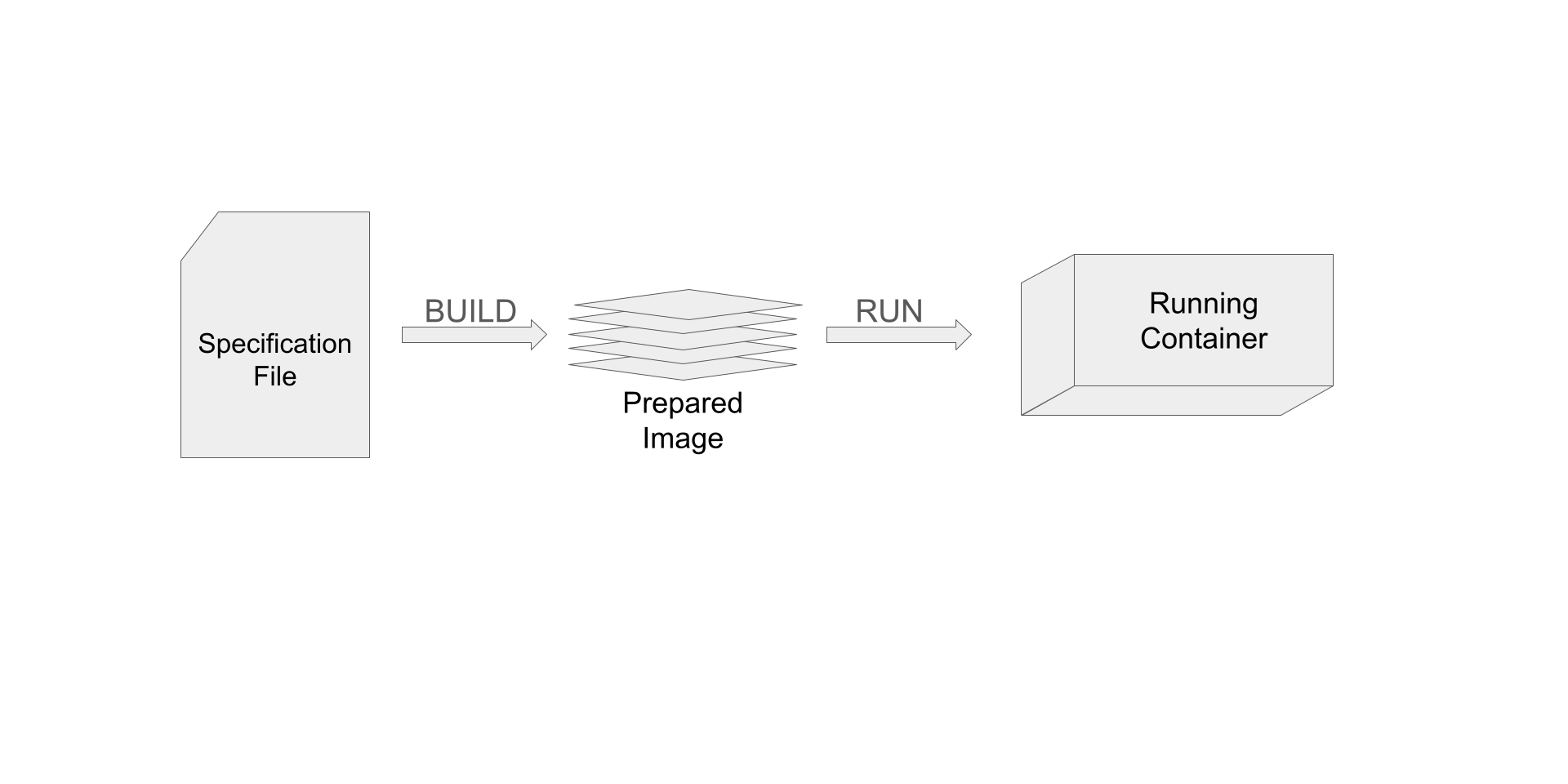
To cover some terminology and to give a broad overview of the flow of using containers, we’ll briefly discuss this figure.
Environment Isolation

Another important aspect of containers is their relative isolation from the host system when compared to something like Conda. Remember that when we are running software within a container, the software interacts with a completely virtualized version of the hardware system. By nature of that, that means that there is additional separation between the software in the container and the software that is outside of the container. Conda makes no such distinction, but rather uses a couple of tricks to make it easy to switch between environments.
Static Images are Stable Across Time
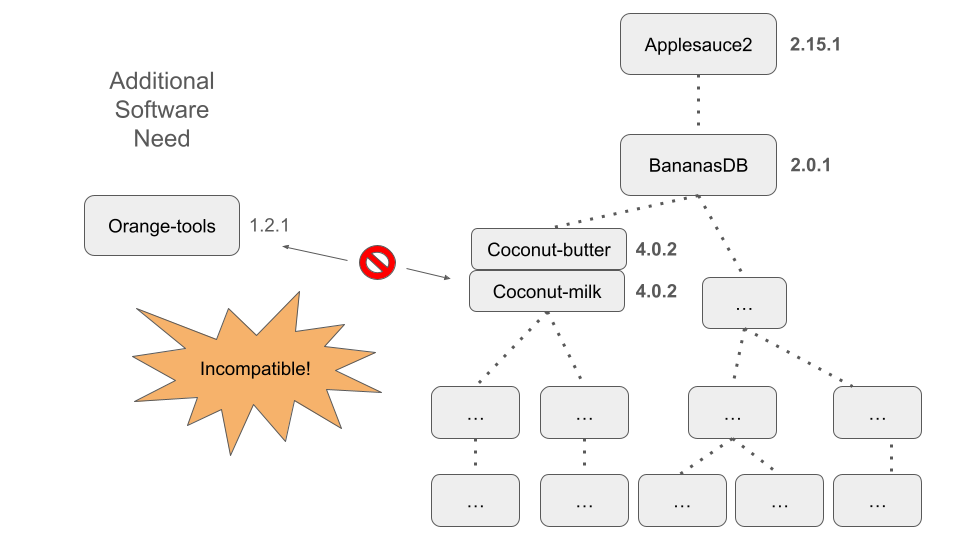
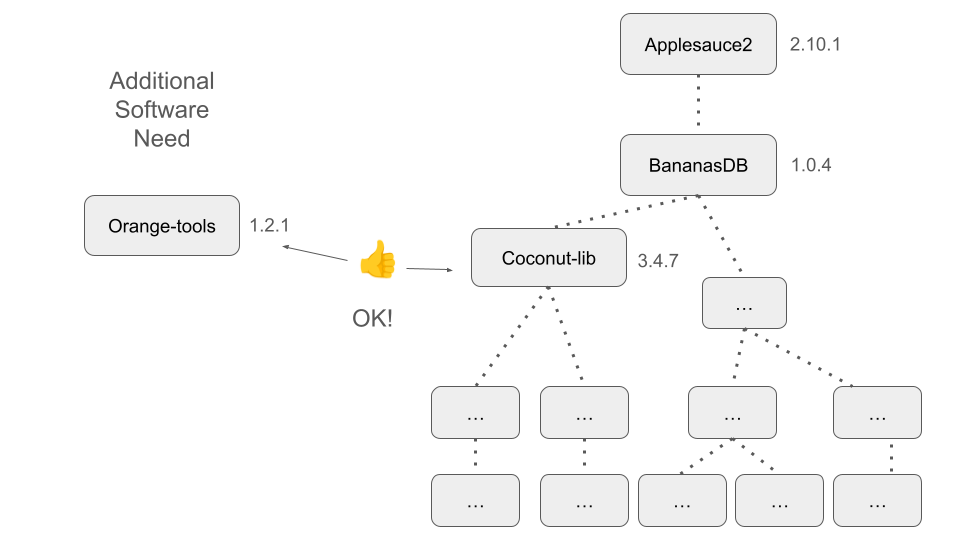
We’ll briefly revisit this idea and relate it to the incompatibility scenario that we described in the previous module.
Not Just Software
Containers can be bundled with more than software - things like environment variables, configuration files, etc. can be included. For some tools, this is a critical aspect of providing simple plug-and-play usability.
Docker
We’ve discussed containerized software as a concept, and now it’s time to briefly discuss a specific containerization tool - in fact arguably the most widely used container software today - Docker.
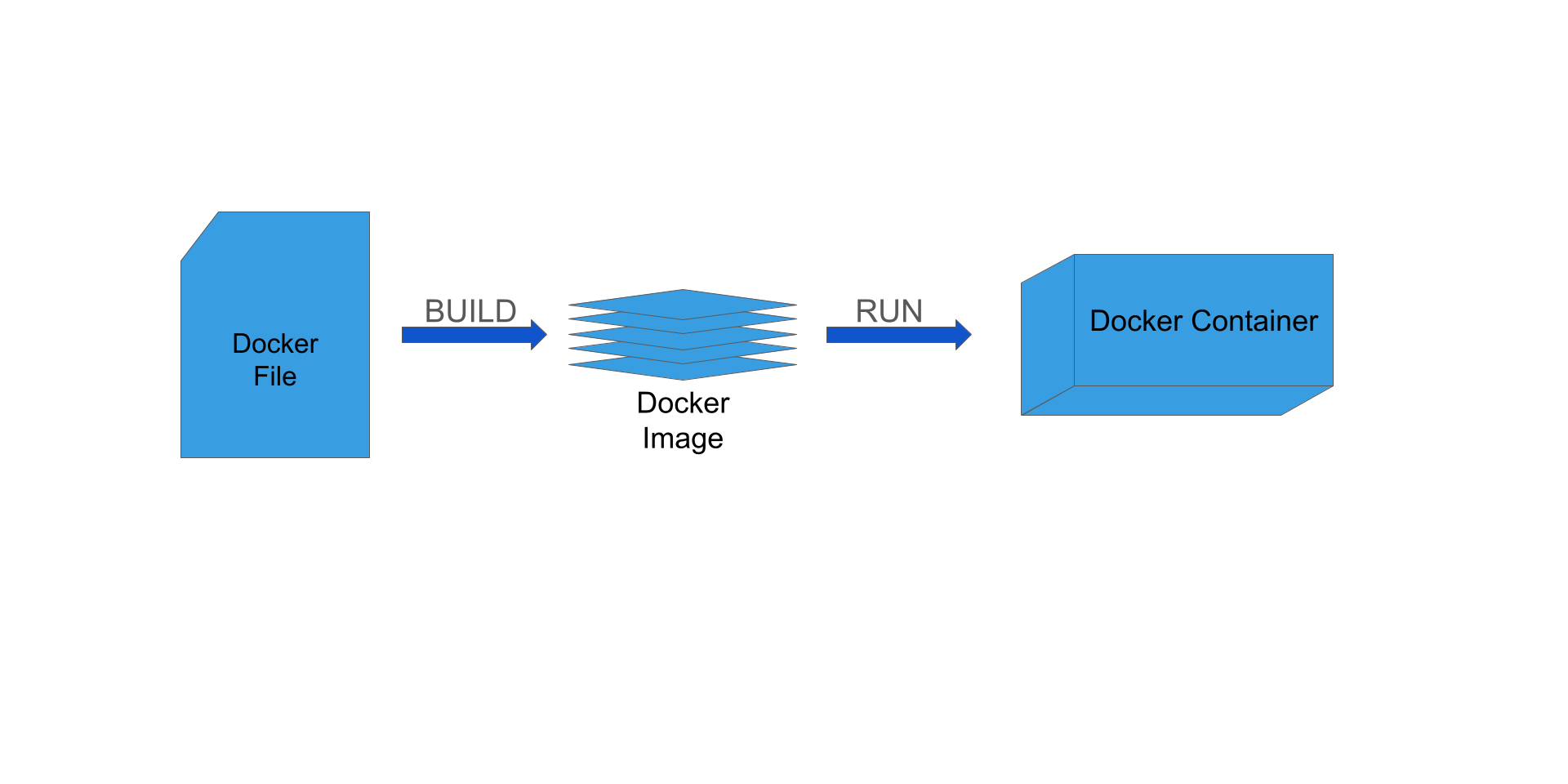
Example of a Dockerfile
FROM centos:centos7
RUN yum -y install wget gdb
COPY foo.yaml /tmp
RUN wget -P /tmp "https://download.example.com/example-installer-3.2.1.el7.x86_64.rpm" && \
rpm -i /tmp/example-installer-3.2.1.el7.x86_64.rpm && \
rm /tmp/example-installer-3.2.1.el7.x86_64.rpm
ENV PATH ${PATH}:/opt/foo/binSingularity
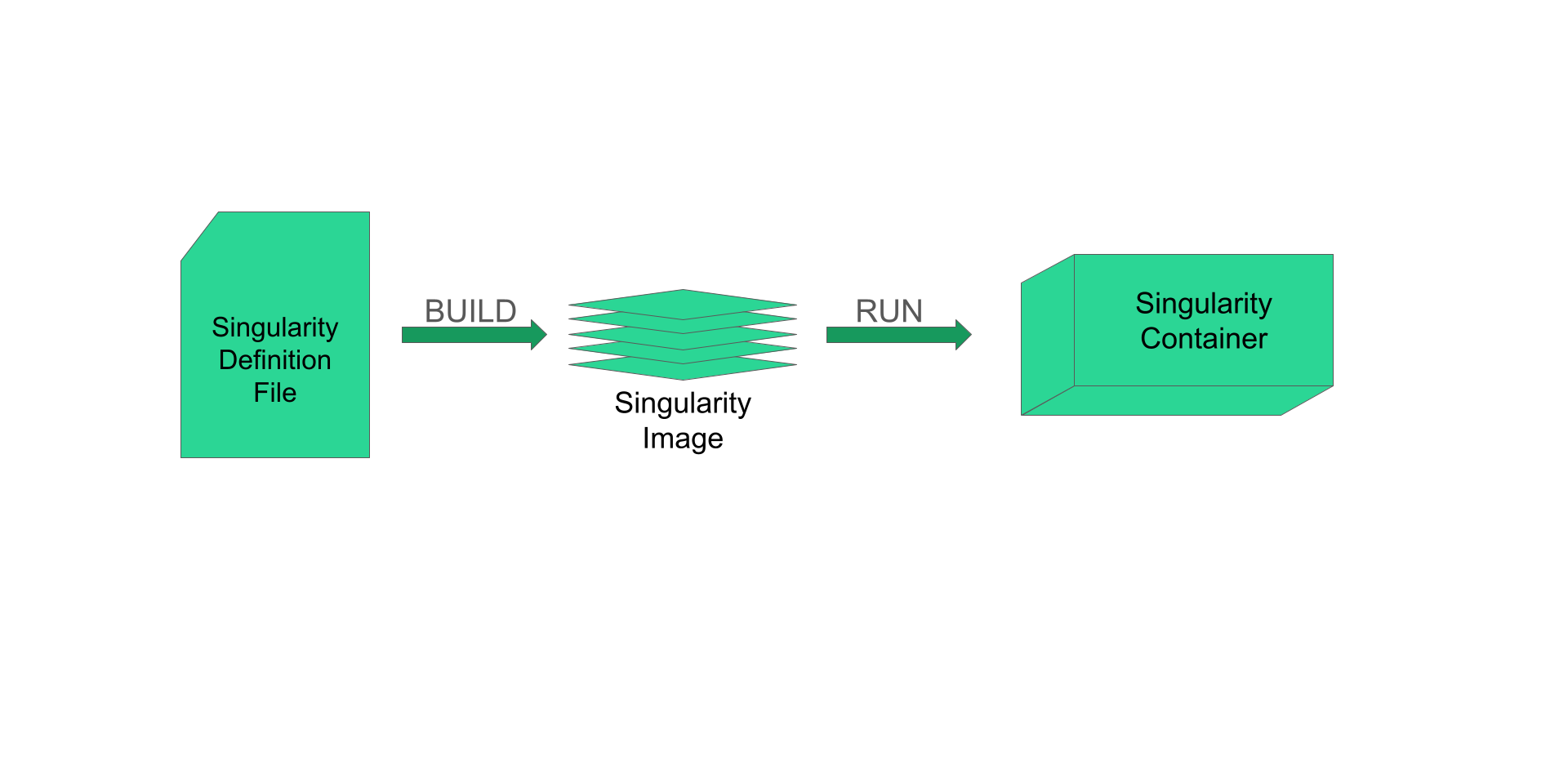
Example of a Singularity definition file:
BootStrap: debootstrap
OSVersion: stable
MirrorURL: http://ftp.us.debian.org/debian/
%runscript
echo "This is what happens when you run the container..."
%post
echo "Hello from inside the container"
apt-get update
apt-get -y install fortune cowsay lolcat
%environment
export PATH=$PATH:/usr/gamesSome Quick Notes on Singularity
- It is a purpose-built containerization software for an HPC system
- Singularity can also run Docker containers
- We have several repositories at our fingertips
- Docker Hub - https://hub.docker.com
- Biocontainers - https://biocontainers.pro
- Quay IO - https://quay.io
- Galaxy Project - https://depot.galaxyproject.org/singularity/
Exercise - srun, singularity shell, Dialog
Parsing
Following along with the instructor, we’ll launch an interactive job
with srun. Once we’ve entered the running job, we will use
singularity with an existing docker image and launch a ‘singularity
shell’. With the required python packages now available inside the
running container, we’ll try our dialog_parsing.py
script.
srun, singularity shell, Dialog Parsing -
Solution
srun --pty --job-name=${USER}_singularity_dialog_parsing --account=bioinf_wkshp_class --partition standard --mem=2000 --cpus-per-task=2 --time=00:20:00 /bin/bash
cd ${WORKSHOP_HOME}/projects/alcott_dialog_parsing
mkdir results_singularity_A
module load singularity
singularity shell docker://umichbfxcore/rcom_nlp_env:0.1.1
python scripts/dialog_parser.py -i inputs/alcott_little_women_full.txt -o results_singularity_A -p ADJ -c 'Jo,Meg,Amy,Beth,Laurie'We’ll take a look at the resulting word lists after running the script.
Note: We’ll use the same running
srunjob for the next exercise as well
Exercise - Continued srun,
singularity exec, Dialog Parsing
Following along with the instructor, we’ll continue to use the same,
running, srun job. This time we’ll use
singularity exec to run our script.
Continued srun, singularity exec, Dialog
Parsing - Solution
pwd # Ensure that we're in the alcott_dialog_parsing project directory
mkdir results_singularity_B
module list # Ensure that we have the singularity module loaded
singularity exec docker://umichbfxcore/rcom_nlp_env:0.1.1 python scripts/dialog_parser.py -i inputs/alcott_little_women_full.txt -o results_singularity_B -p ADJ -c 'Jo,Meg,Amy,Beth,Laurie'Once again we’ll take a look at the resulting word lists.
Exercise - SBATCH, singularity exec, Dialog
Parsing
Following along with the instructor, we’ll create an SBATCH file that
will use singularity exec to run dialog parsing. We’ll use
what we’ve learned to construct an appropriate file, and then submit it
with sbatch.
Exercise - srun, singularity shell, Word
Cloud
Following along with the instructor, we’ll launch an interactive job
with srun. Once we’ve entered the running job, we’ll use
singularity shell and try running our
word_cloud.py script on an extracted word list.
srun, singularity shell, Word Cloud - Solution
srun --pty --job-name=${USER}_singularity_word_cloud --account=bioinf_wkshp_class --partition standard --mem=500 --cpus-per-task=1 --time=00:05:00 /bin/bash
module list
module load singularity
cd ${WORKSHOP_HOME}/projects/alcott_dialog_parsing
singularity shell docker://umichbfxcore/rcom_nlp_env:0.1.1
python scripts/word_cloud.py -i results_singularity_B/Jo_adj.txtAfter running the command, we’ll check for the existence of the
expected output file results_singularity_B/Jo_adj.png, then
look at it via Great Lakes’ web-based file browser.
Exercise - SBATCH, singularity exec, Word Clouds
Following along with the instructor, we’ll create an SBATCH file that
will use singularity exec to create word clouds for Beth’s
lists of adjectives. We’ll use what we’ve learned to construct an
appropriate file, and then submit it with sbatch.
If we’re confident in our SBATCH file and are satisfied with our
results, then we’ll make copies of the SBATCH file for each separate
character, and submit them with sbatch. Finally, we’ll
review our results.
Demonstration - Remote Build of a Singularity Image
So far we’ve only demonstrated uses where we use existing docker or singularity images. While we’ve shown that this is powerful and easy to use, we aren’t taking full advantage of singularity’s capabilities without building new images.
We won’t dive deeply into the topic of how to build singularity containers, but we want to demonstrate that it is possible to do so. It’s not quite straightforward to run the build steps on Great Lakes, but with a little bit of extra setup it is possible to use a remote (cloud) builder, which we’ll demonstrate.
For more information about the remote build process, see the documentation here:
Link to documentation on remote builds
Demo Remote Build - Solution
We’ll create a singularity definition file called
cowsay.def
nano cowsay.def
Contents of cowsay.def are shown in the singularity
definition file shown in the above lesson.
Note, to use the remote builder with the --remote flag,
you must follow the instructions on remote builds above - create an
account and generate a token online, then use
singularity remote login.
singularity build --remote cowsay.sif cowsay.def
After this, we have a singularity image file, cowsay.sif
that we can use with singularity shell cowsay.sif or
singularity exec cowsay.sif cowsay Mooo
Review of LMOD, Conda, Docker, and Singularity
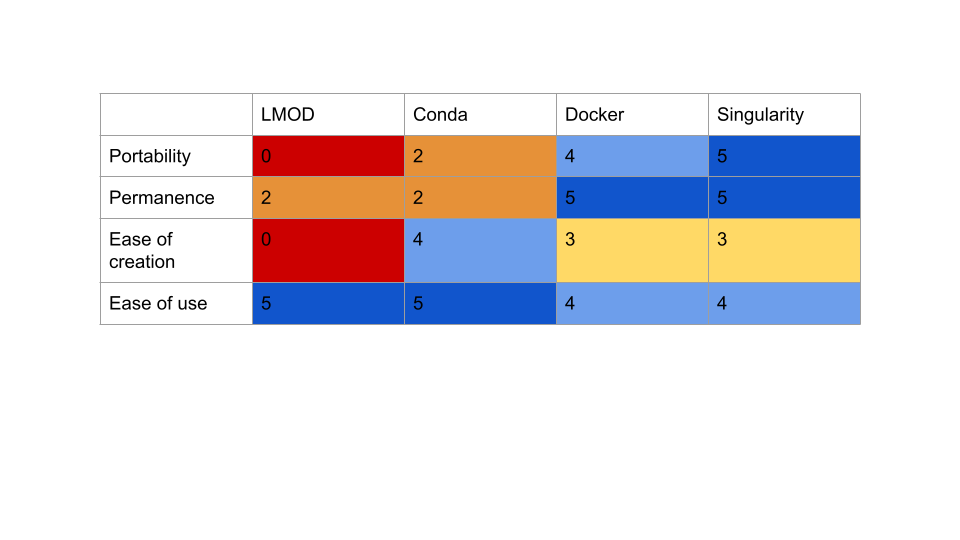
In choosing any tool, we must consider the inherent trade-offs between simplicity, portability, and durability.
| Previous lesson | Top of this lesson | Next lesson |
|---|
